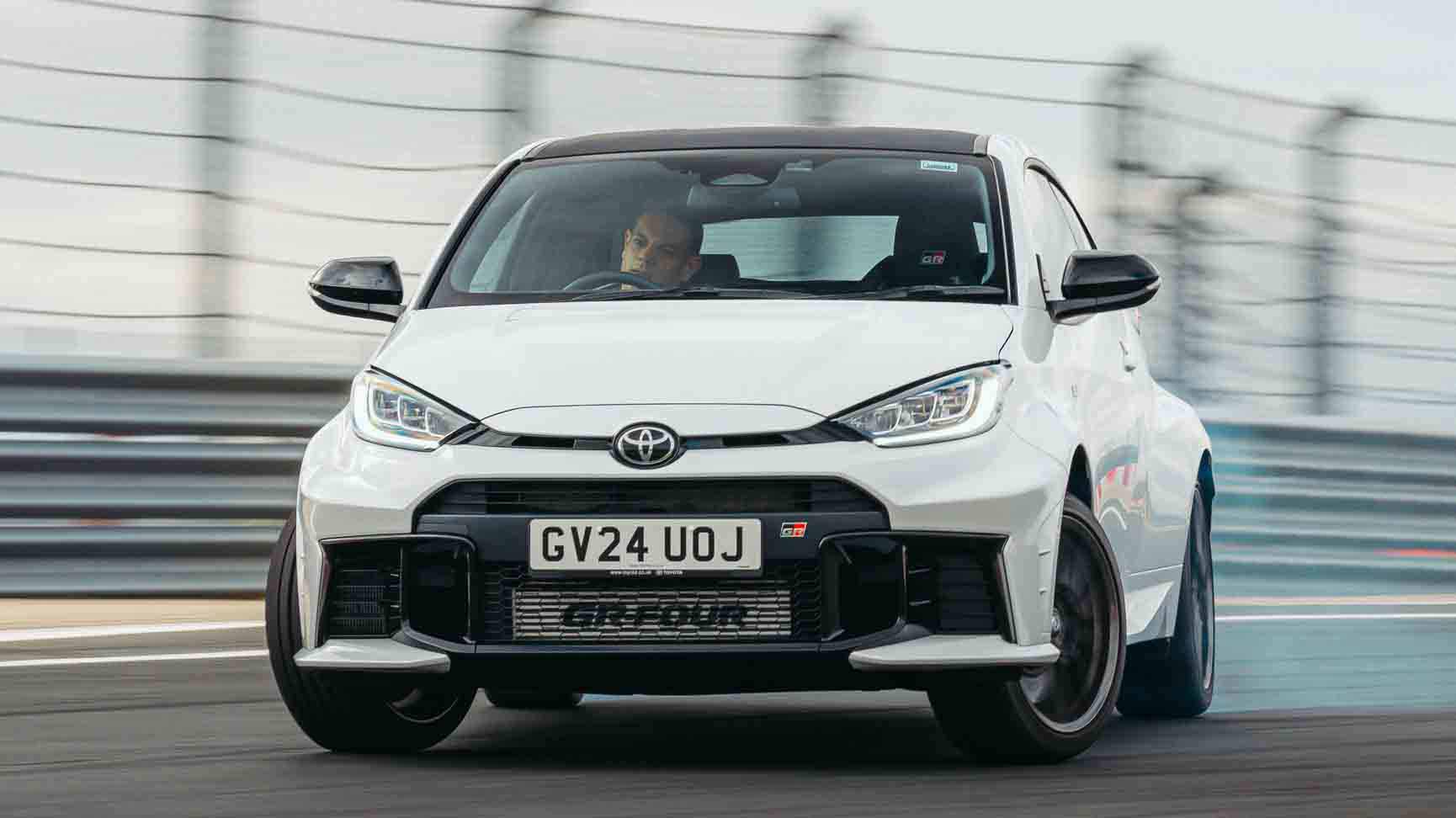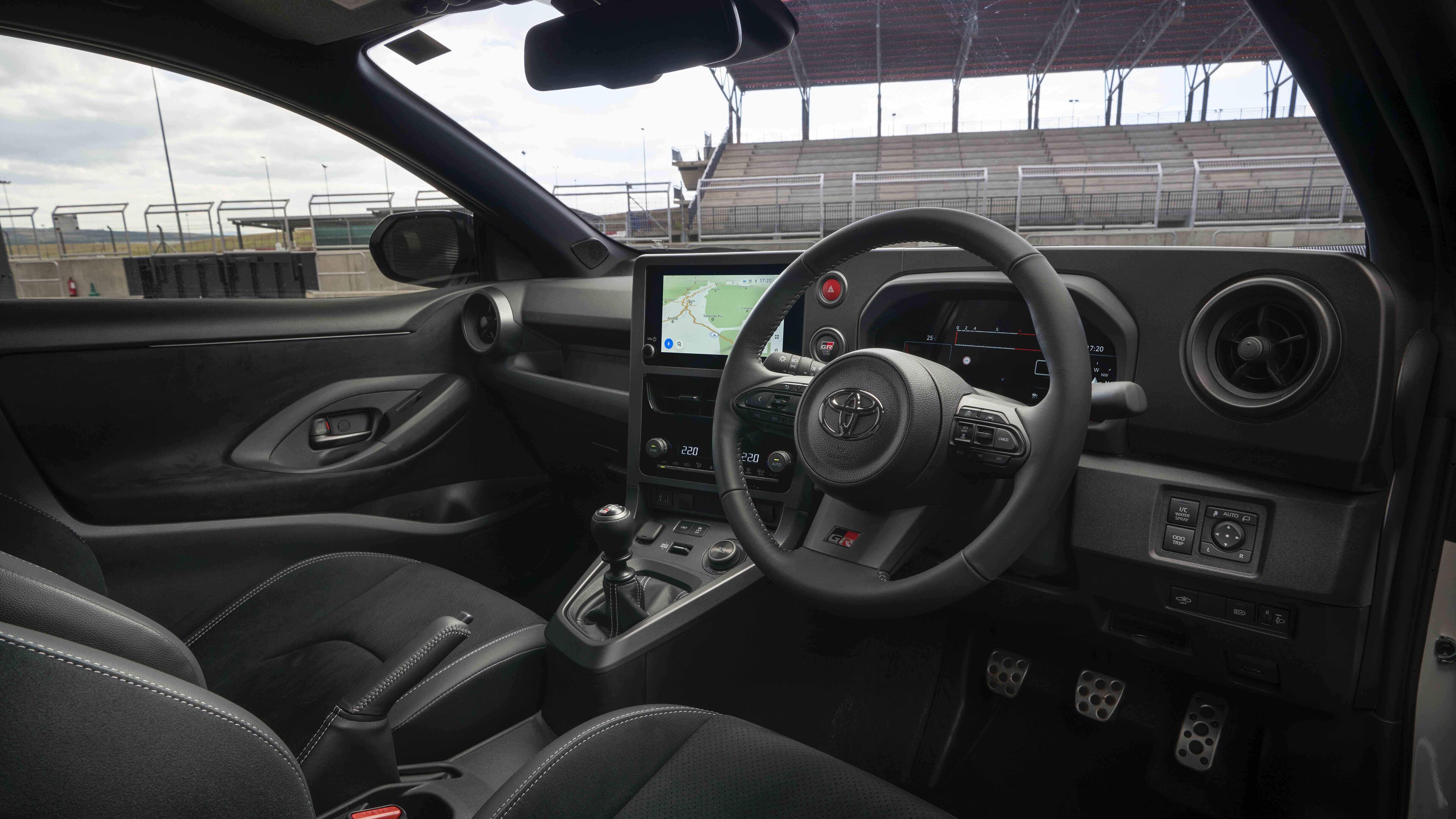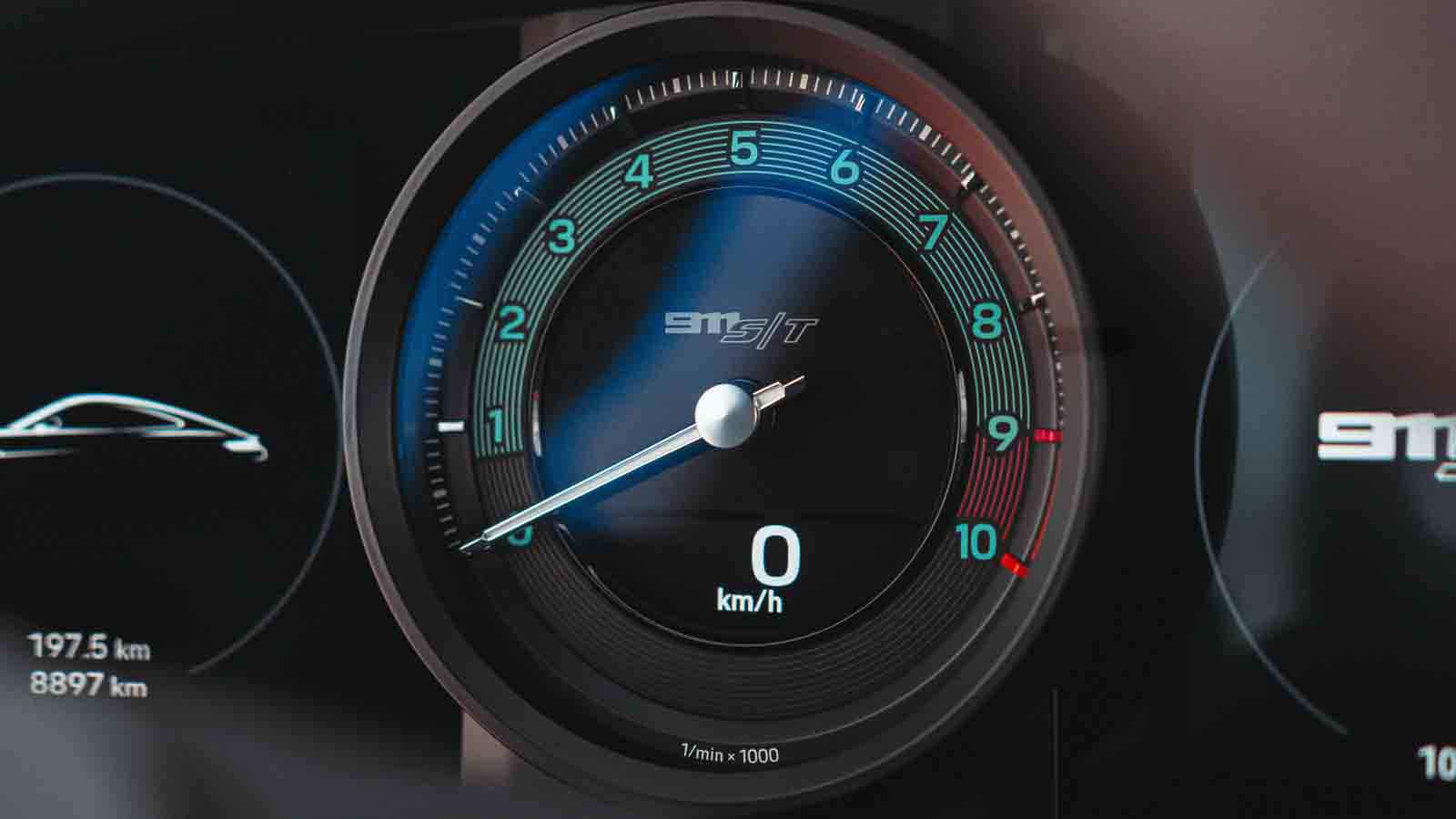
Porsche 911 S/T vs Toyota GR Yaris: the manual gearbox battle
Two cars from opposite ends of the performance spectrum with one crucial thing in common...
You will not be surprised to hear that both of these cars are pretty much nailed on for TG hero status already. The Porsche 911 S/T is essentially a combination of all the best bits of Porsche’s latest GT cars, but made even better. It was first unveiled to the world back in August 2023 to celebrate 60 years of the 911, with just 1,963 planned for production. It uses the 518bhp 4.0-litre naturally aspirated flat six from the GT3 RS but avoids that car’s rather conspicuous aero and adds a manual gearbox. It also saves weight in many ways to tip the scales at 1,380kg, making it roughly 40kg lighter than a manual GT3 Touring. And yes, they’re already being flipped for roughly twice the £231,600 base price.
The Toyota GR Yaris on the other hand was a bit of a cheapish champion when it first arrived at the start of 2020 with an entry price that snuck under £30,000. It was a proper little homologation special rally car for the road, and we fell for its chunky arched charms. Unfortunately, earlier this year Toyota announced this new facelifted version would cost £44,250 in the UK. With optional pearlescent paint our car here climbs to over £45k. Still, that pales in comparison with the £60k that Toyota is asking for the Ogier and Rovanperä special editions. Sixty thousand pounds!
We won’t even begin to try to justify that, but the facelift has brought with it some exciting updates. The turbocharged 1.6-litre 3cyl has been reworked to make it more reliable and up power from 257 to 276bhp, while torque jumps from 266 to 288lb ft. The suspension and shocks are stronger, the cabin layout has been redesigned to feel more sports car-like (crucially with a lower seating position) and the body has been toughened up with a 13 per cent increase in spot welds and 24 per cent more structural adhesive. Ultra nerdy stuff. This is promising. Oh, and that new steel mesh grille showing the GR-FOUR script on the intercooler is brilliantly 1990s.
Photography: Mark Riccioni
Accompanying the updates, Toyota also made some excellent statements about how it followed a concept of “develop, race, break, fix” to improve the original GR Yaris using actual motorsport with feedback from both race and rally drivers. Championed by chairman Akio Toyoda (who still competes under the ‘Morizo’ pseudonym at the age of 68), Gazoo Racing’s road car division has been on fire the past few years.
And as is blatantly obvious from all of the cars that it’s producing, so has Porsche’s GT. Although when the 911 S/T was first introduced, Andreas Preuninger – the boss of the GT division – told TG that it was the pinnacle. His ultimate modern 911.
Both Toyota and Porsche have fought to keep the manual gearbox alive in recent years, and it’s the presence of a clutch pedal and those silly little levers that have brought these two cars together here. Yes, there are more powerful, more expensive and more exotic cars at Speed Week 2024, but this pair might just be the most engaging.
The Porsche comes with a six-speed manual with a stubby lever, a gloriously short throw and shorter ratios than the GT3. It also gets a single-mass flywheel and a lightweight clutch that needs to be treated with care. The Toyota also gets six speeds and a sweet little shift. Like the 911 it’ll rev match automatically for you on downshifts should you desire, and the lever itself is nice and close to the steering wheel.
You can actually now spec the Yaris with a new eight-speed auto, but if you want something done well (or if you just want to have more fun), do it yourself. Somehow Toyota has managed to make the GR an even better hot hatch than before too. It’s slightly stiffer so turns in more sharply on track but still feels brilliantly balanced.
There are three drive modes that alter the power steering, throttle response and the dial display, but really you should just stick all of that in Sport and then play with the separate GR-FOUR knob. There are three settings again here; in Normal mode the torque distribution is 60:40 front to rear and the Yaris leans towards a bit of sensible understeer. However, in Track mode the system can automatically shift from 60:40 all the way through to 30:70. That means you can throw it into a bend safe in the knowledge there’s more torque up front, before getting on the throttle and sending power to the back for an ounce of playful oversteer and a swift exit.
Previously the Circuit Pack with its lightweight forged wheels and twin Torsen limited-slip diffs was an optional extra in the UK, but nearly everyone ticked the box so it’s now standard and you can feel the drive shifting from left to right as well as back to front. It all conspires to keep you pointing the correct way, before pelting you into the distance no matter how much angle you induce. For reference, the final mode is Gravel, which gives you a 53:47 split. Toyota says that should be reserved for use on “special stages”. Excellent.
The 911 S/T is a completely different kettle of fish. You’re perfectly placed inside a beautifully purposeful interior and at idle it sounds raw as the flat six rattles away like a bag of spanners. Toyota might have improved the GR Yaris using racecars, but close your eyes while sat still and you’d be forgiven for thinking Porsche just stuck some numberplates on one of theirs and said have at it. The lightweight flywheel and absence of forced induction mean throttle response is ludicrous, but you’ll need to treat the clutch with caution away from a standstill.
Top Gear
Newsletter
Thank you for subscribing to our newsletter. Look out for your regular round-up of news, reviews and offers in your inbox.
Get all the latest news, reviews and exclusives, direct to your inbox.
Once on the move it’s immediately clear this is so much more than a GT3 Touring. For starters, the rear wheel steering has been binned to save weight and to reintroduce some purity to the driving experience. That has clearly worked, because the S/T’s steering is so beautifully direct. Eyes find apex, hands naturally follow suit, car finds apex. Every time. The front end just sticks and you’re able to place the rear on the throttle. It corners flat but the suspension somehow retains some compliance even in its sportier mode, and the standard carbon ceramic brakes provide plenty of confidence with proper pedal feel. This is a special car.
And we haven’t even started on the engine. The lightweight S/T will do 0–62mph in 3.7secs and vmax at 186mph (there are those shorter gear ratios in action), but perhaps the most important number is the 9,000rpm red line. The noise near the top end is magic, and you’ll be up there a fair bit because the full 518bhp isn’t available until 8,500rpm.
You didn’t really expect either of these cars to be bad, did you?
The GR Yaris’s three-cylinder sounds brawnier and more aggressive than before, and it’s got that little bit of extra grunt to back it up. The 0–62mph time has dropped from 5.5secs to 5.2 as a result. Despite the blocky new interior, the facelifted car still weighs the same 1,280kg. The brakes hold up well on track and the extra cooling seems to do its job. And yes, that is a little intercooler spray button down behind the steering wheel to help manage the temperatures.
You might think the GR is trying to be too serious, but it still manages to retain that little tyke character. It wants to pick a fight with cars like the 911 S/T, and on a narrow British B-road you can imagine it keeping the Porsche honest.
Come on now, you didn’t really expect either of these cars to be bad, did you? The hype around both has been hefty, but they both more than live up to it. Two departments with very similar values have created two very different cars. Luckily for me I don’t think I’ll have to choose between them – I reckon there’s space for both in this year’s final five.











